contact Boss
Don’t rush to close it, talk to our boss directly, you will get a surprise.
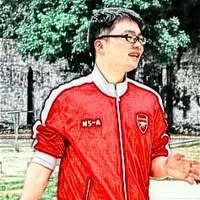


1900+ Users
Completed User Services
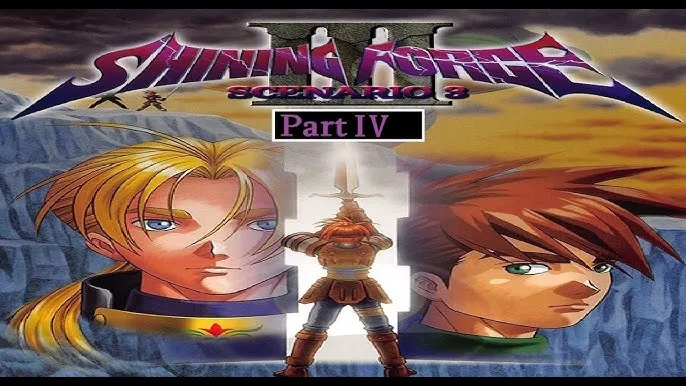
10 Sega Saturn Strategy Games That Still Remain Unsurpassed (Part 1)
The Sega Saturn (SS) isn’t a gaming company, but rather a sixth-generation 32-bit home video game console released by Sega of Japan in 1994.
As a key product in Sega’s home console business, it witnessed the fierce competition in the console market in the mid-1990s, and its rise and fall indirectly influenced Sega’s strategic transformation.
The birth of the Sega Saturn stemmed from Sega’s strategic planning for the 32-bit console era. In 1992, as other manufacturers like 3DO began developing 32-bit consoles, Sega launched the “Giga-Drive” R&D project, aiming to create a next-generation console with cutting-edge performance.
Its core design utilized a dual-CPU architecture, and its 3D performance was 1.5-2 times that of the Sega Model 1 arcade console at the time, a top-tier configuration at the time.
The console’s name, “Saturn,” clearly signified its significance—referring to the sixth planet in the solar system and symbolizing its status as Sega’s sixth-generation home video game console.
In December 1993, Sega officially announced its development plan for the Saturn. On November 22, 1994, the Saturn debuted in Japan, priced at 44,800 yen.
The launch title, Virtua Fighter, delivered an arcade-quality 3D combat experience, driving console sales to over 170,000 units on its first day, with the first batch of 200,000 consoles nearly fully pre-ordered before release.
In our previous blog post, we reviewed five of the ten most iconic strategy games for the Sega Saturn console. Now, let’s take a look at the remaining five.
For old players who have experienced the Saturn era, Sakura Taisen can be said to be the iconic existence of this platform.
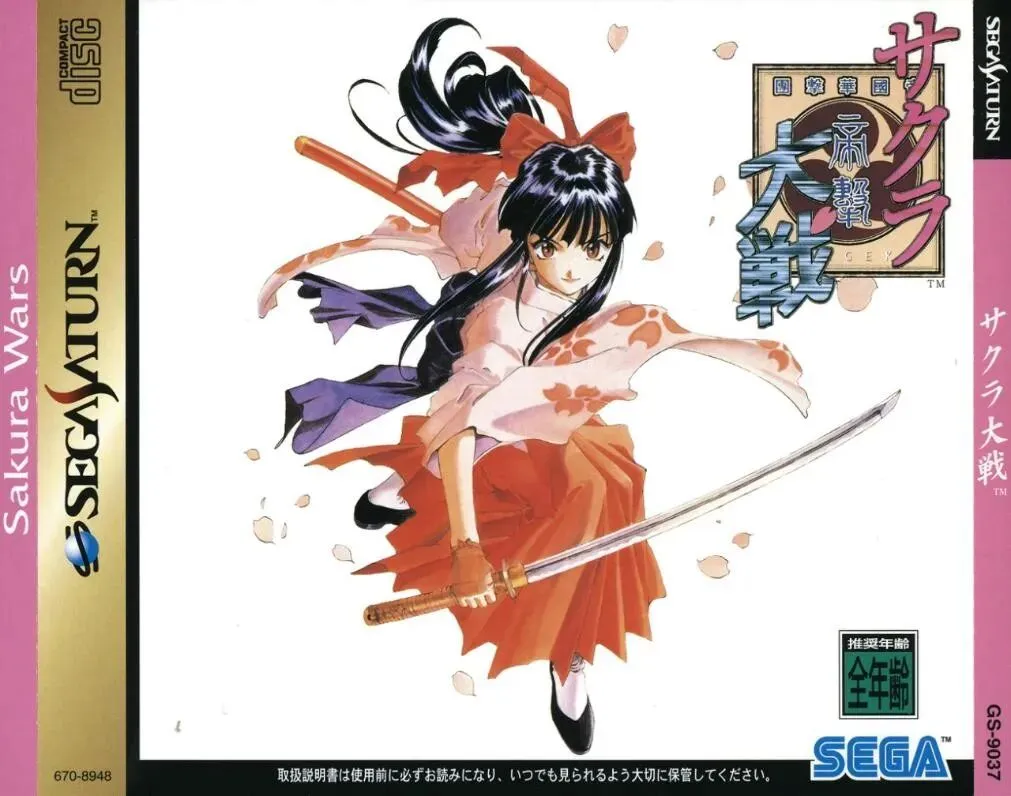
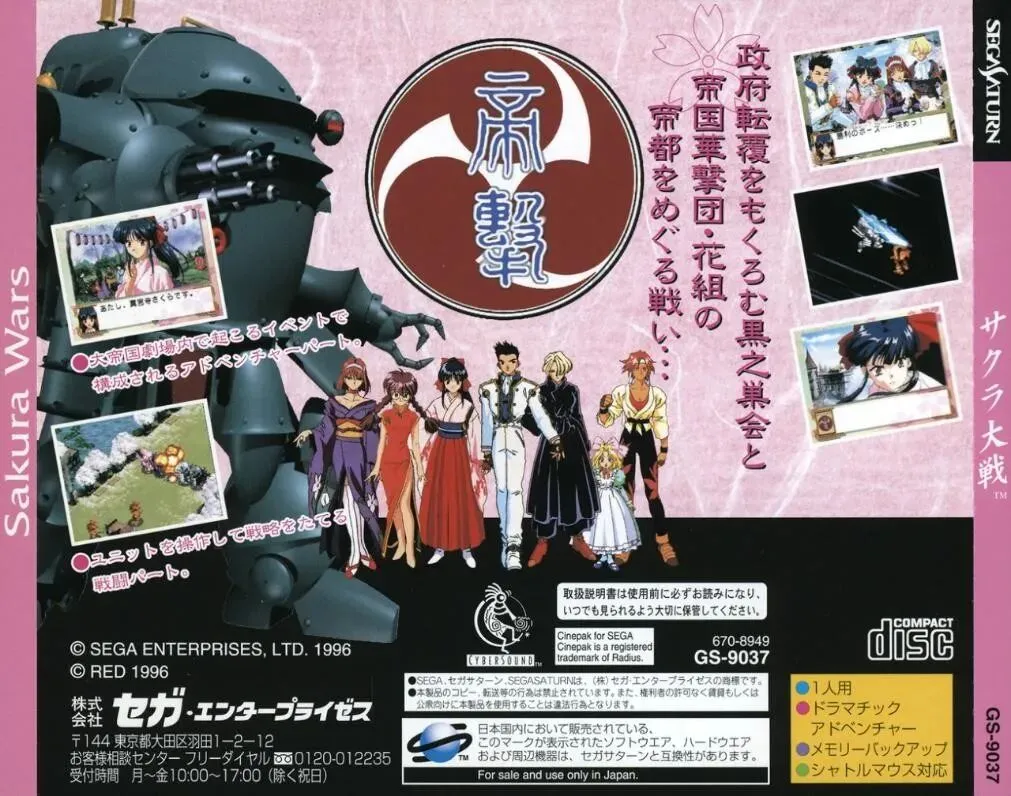
Sakura Taisen, an original IP released on the Sega Saturn (SS) in 1996, is a strategic game from Sega during a crucial period of the console wars.
Its status is reflected in numerous aspects, including its strong sales, genre innovation, and enhanced platform competitiveness. It can be considered a “savior” of the Sega Saturn ecosystem.
Producer Prince Hiroi skillfully combines a split-act stage play with interactive gameplay, allowing players to not only experience traditional turn-based strategy combat within the main storyline but also directly influence the outcomes of numerous events on the battlefield through dialogue and interaction with several female characters.
Unlike traditional, hardcore strategy games, Sakura Taisen features significantly fewer combat elements, making it one of the easiest games overall.
However, the rich character development content creates a strong sense of immersion, making it accessible even to beginners with no gaming experience. It’s a true stepping stone to the world of strategy games.
During the Saturn era, characters like Shinguji Sakura became Sega’s new signature, even surpassing the long-standing icon, Sonic.
This series has seen numerous installments, but the original Saturn version left the most lasting impression. Remakes were subsequently released for platforms like the PS2 and PSP.
1996 marked a watershed year in the competition between Sega and Sony’s PlayStation (PS), as the latter gradually gained market share thanks to blockbuster titles like “Resident Evil.”
In its early days, the Sega Saturn relied heavily on arcade ports (such as “Virtual Fighter” and “Panzer Dragoon”), leaning towards hardcore action games and lacking a broad audience.
The emergence of “Sakura Wars” filled this gap.
That year, Sakura Taisen, with global sales of 550,000 copies, climbed to 8th place on the Sega Saturn game charts, becoming a benchmark for Sega’s original games and directly boosting Saturn hardware shipments.
The game’s success even forced Sega to release subsequent sequels on the Dreamcast (DC) platform, creating a hidden bundled effect: “Buy a console and get Sakura Wars for free.”
Unlike arcade ports, which target core gamers, Sakura Taisen’s fusion of romance and strategy with tactical combat has attracted a large number of female players and casual users.
The game’s Takarazuka Revue-style stage performances and chapter-by-chapter plot structure (including previews for the next episode) give players an immersive experience, reminiscent of “playing anime.” This accessible feel completely dispels the Sega Saturn’s stereotype as a “hardcore console.”
In the mid-1990s, Sakura Taisen set a new benchmark in the chess and card game market with its disruptive design, and its innovations are still used in subsequent games today:
This game deeply integrates the strategic combat of traditional war chess with romantic development. During the day, players manage the Imperial Flower Troupe, strengthening their bond with the heroine through dialogue choices (using the LIPS real-time selection system). At night, they command their troupe members in mechas to fight against the “Demon Slayers.”
This dual-track structure of “daily life + battle” elevates battlefield decision-making beyond simple numerical calculations to incorporate emotional bonds (for example, players may adjust their tactics due to concerns about a beloved character being injured).
At a time when mainstream tactical games still used 2D graphics, Sakura Taisen pioneered the seamless integration of 3D mecha models with battlefield scenes. The fluid flow of movement, attack, and special moves delivered a visual impact far exceeding that of contemporary games.
Complemented by the epic soundtrack composed by Kohei Tanaka (including the theme song “Imperial Flower Troop”), the game created an immersive experience encompassing the trinity of “audio, visuals, and gameplay.”
Producer Prince Hiroi created a game set in Japan’s Taisho era, deeply integrating the culture of the Takarazuka Revue with the aesthetics of steampunk.
The in-game “Hana-gumi” members’ stage performances aren’t simply cutscenes; they’re deeply intertwined with the plot and character development (for example, Shinguji Sakura’s stage mishaps affect her combat attributes).
This cultural integration elevates the game beyond mere entertainment, becoming a cultural embodiment of Japan’s Taisho romanticism.
Sakura Taisen’s quality has not only been recognized by the market but has also been endorsed by prestigious awards. The value derived from its IP has further consolidated the influence of the Sega Saturn platform:
Sakura Taisen won the 1997 CESA Grand Prix Award and the 1997 Game of the Year Award, becoming one of the most awarded original games for the Sega Saturn.
This honor directly enhanced Sega’s reputation and influence in the gaming industry.
Leveraging Sakura Taisen’s immense popularity, Sega quickly launched a multimedia spin-off project, releasing live-action stage plays, animations, comics, novels, and other works, forming a complete “game – film – peripheral” industry chain.
The live-action stage plays, which directly replicated the Takarazuka-style performances from the game, attracted significant attention from non-gamers, elevating “Sakura Wars” from a gaming IP into a cross-media cultural icon.
Sakura Taisen’s significance to the Sega Saturn far transcends that of a mere game. It served as Sega’s strategic weapon against the Sony PlayStation in the console wars and also marked the transition of Japan’s gaming industry from a “gameplay-driven” to a “content-driven” one.
The “romance + strategy” fusion model it pioneered profoundly influenced subsequent series like “Persona” and “Fire Emblem.”
And its approach of building an IP ecosystem through a cultural core has provided a classic model for modern gaming IP operations. Even though the Sega Saturn ultimately lost the console war, “Sakura Wars” remains enshrined in the halls of Japanese gaming history as a “victor among losers.”
As an evergreen strategy chess game with a history of more than 30 years, the Super Robot Wars series is indispensable on almost every console platform, and the Saturn version of Super Robot Wars F Final is the pinnacle of the entire series that is difficult to surpass.
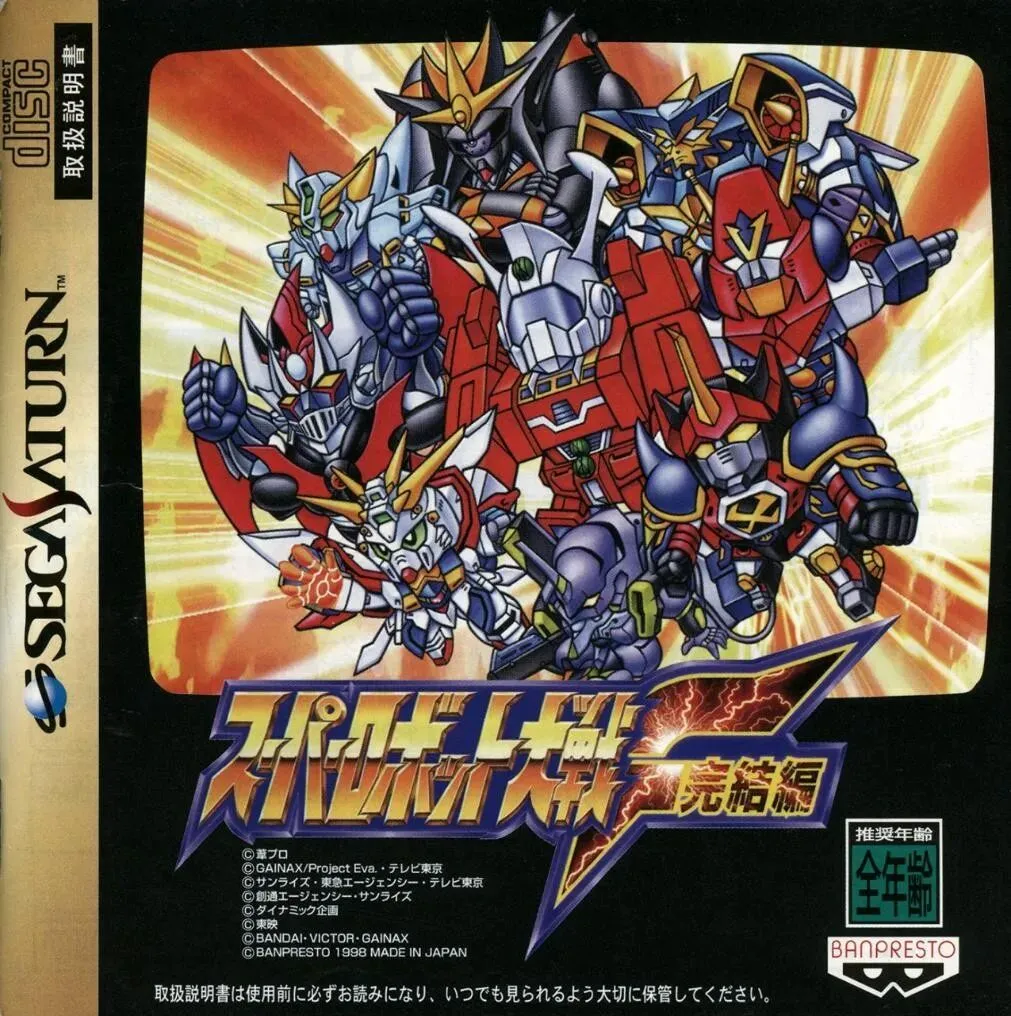
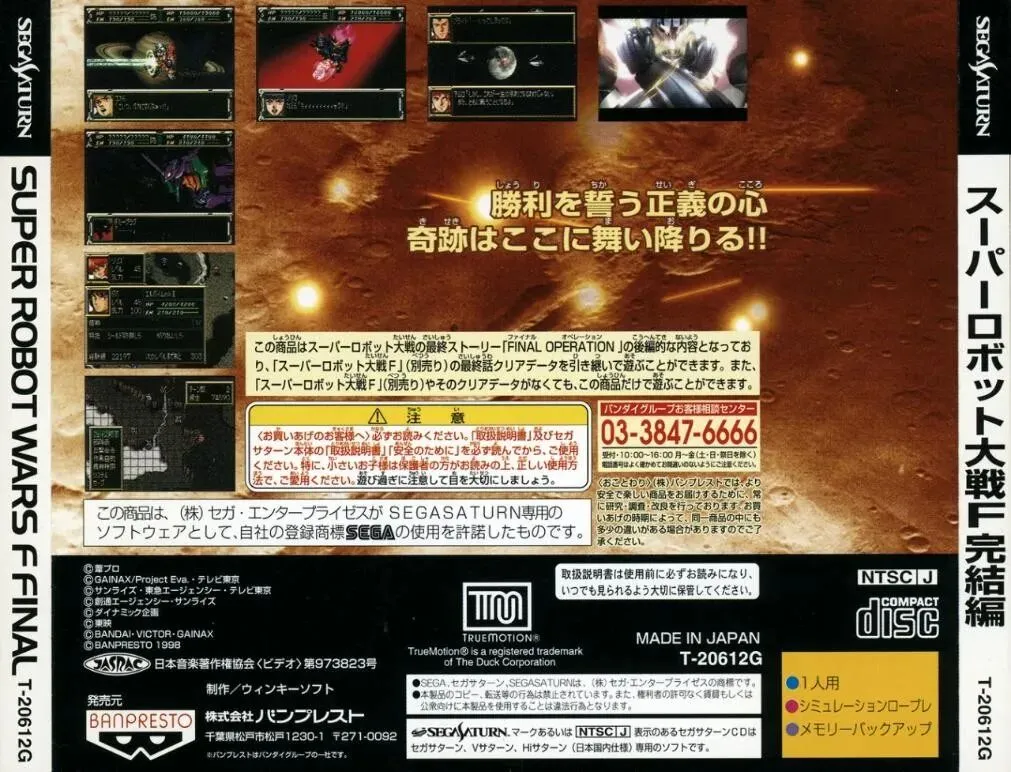
“Neon Genesis Evangelion” (EVA), which premiered in October 1995, received a rave review. Its inclusion in the Super Robot Wars series was a popular choice, and Sega, which held the rights to the EVA game adaptation, secured a limited-time exclusive release.
Due to the sheer volume of content, the series was ultimately released as two consecutive installments: Super Robot Wars F and Super Robot Wars F Final.
Super Robot Wars F Final does not have complex systems such as combined attacks that are common in later works. The main fun is to gain experience points and money in the battle chess levels and cultivate your favorite characters and machines.
However, its pure, hardcore style is beloved by die-hard fans. Enemies are numerous and powerful, especially in the early stages when your team lacks many powerful mechas, often leading to stuck levels due to running out of ammunition and food. Money is severely limited throughout the game, requiring you to focus on training and upgrading a few of your favorite mechas.
This game can be considered the last representative of traditional mecha warfare. Subsequent games in the series have undergone significant style changes, with reduced difficulty and more slick graphics, but this old-school flavor is worth savoring again.
Super Robot Wars F Final, a strategic title for the Sega Saturn (SS) platform, became a core pillar of Sega’s 32-bit console era through its legendary sales, technological innovation, and iconic IP collaboration.
Its status is reflected not only in its immense commercial success but also in its profound influence on the development of robot-themed games. It is considered a landmark masterpiece representing the “pinnacle of 2D gaming” for the Sega Saturn.
During the intense competition between Sega and Sony in 1997-1998, the Super Robot Wars F Final series injected key vitality into the Sega Saturn with its phenomenal sales:
Super Robot Wars F and Super Robot Wars F Final tied for 9th and 10th place on the Sega Saturn game sales chart, with global sales of 550,000 copies respectively.
Combined sales of the two titles exceeded one million copies, making them one of the few series on the Super Saturn platform to achieve the “two-game million” milestone.
This achievement was all the more remarkable given that Super Saturn overall hardware shipments were lower than those of the PlayStation at the time. It even led to a consumer phenomenon called “buy a Saturn just to play Super Robot Wars,” which directly boosted console hardware sales.
As a benchmark for tactical strategy games, the Super Robot Wars F series virtually monopolized the market share of robot-themed strategy games at the time.
In 1997, Super Robot Wars F debuted at the top of the annual sales charts on the Super Robot Wars platform, and its popularity continued until the release of “F Finale,” creating a sales boom that spanned the entire year.
Compared to similar games on the PlayStation platform during the same period, the Super Robot Wars F series differentiated itself through exclusive content (such as the early EVA collaboration), becoming a “must-have” for Super Robot Wars players.
The Super Robot Wars F series is not only a sales winner, but also redefines the core framework of the Super Robot Wars series with its groundbreaking technical performance and content design:
As the first game in the series to feature fully voiced characters, the Super Robot Wars series employed the original voice actors from the anime, and coupled with the high-quality live-action soundtrack provided by the CD-ROM format, it achieved the leap from “silent war chess” to “sound drama.”
The game’s graphics, leveraging the powerful 2D processing capabilities of the Super Robot Wars, showcased detailed pixel animations of the robots, profound cosmic scenes, and stunning special moves. For example, the EVA Unit-01’s “runaway” animation and the Gundam Z’s “transformation and fusion” special effects reached the cutting-edge standards of 2D games at the time.
Through multiple copyright partnerships, the development team assembled a lineup of the most influential robot IPs of the time, including dozens of classic works such as Gundam F91, Zeta Gundam, Evangelion, Getter Robo, and Top Gun.
They even incorporated “ancient IPs” like Legend of Titan Ideon, creating a “dream collaboration” spanning 30 years of robot culture.
Evangelion’s early game collaborations, exclusive to the Super Saiyan version for a year, became a key selling point for anime fans.
After the Evangelion anime exploded in popularity in 1995, players flocked to buy Sega Saturn consoles to experience the battle scenes of Unit-01.
The game continues the series’ tradition of high strategic engagement and adds several in-depth mechanics: rules for suit upgrade inheritance (for example, the Zeta Gundam only inherits 50% of upgrade progress), dynamic stamina (some levels force a 30-point stamina deduction), and hidden suit unlocking conditions (complex side quests required).
These features push the difficulty and playability of the strategy game to the extreme.
While this “hardcore tribulation” level design may be daunting for novice players, it precisely appeals to the challenge-seeking nature of core players, fostering a unique culture of dedicated players who persevere through levels.
Despite being at a disadvantage in the console hardware performance competition, the Super Robot Wars series became Sega Saturn’s key bargaining chip against the PS through content exclusivity and ecosystem integration:
To secure core IP partnerships, the development team reached a one-year exclusive agreement with the copyright holder for the Super Saiyan version. This agreement not only included EVA in the game, but also exclusively included Sega IP content like “Top Gun.”
This exclusivity strategy forced PlayStation players to wait a year before experiencing the same content. During this time, a large number of robot fans were drawn to the Super Saiyan platform, resulting in a brief “platform migration” phenomenon.
The Sega Saturn’s dual-CPU architecture made 3D game development more challenging. However, the Super Robot Wars F series cleverly avoided these 3D shortcomings by fully leveraging Super Robot Wars’ strengths in 2D graphics processing and sprite animation rendering, creating visual performance that surpassed even the most advanced 2D wargames.
Compared to 3D attempts on the PlayStation platform during the same period (such as the crude 3D modeling in some games), the 2D pixel aesthetic of the Super Robot Wars F series more closely matched the aesthetic preferences of robot fans, effectively proving the Sega Saturn’s position as the “king of 2D.”
The influence of the Super Robot Wars series has long surpassed the game itself and has become an important carrier of Japanese robot culture in the 1990s:
The game’s “Guan Gong vs. Qin Qiong”-style IP collaborations (such as Amuro and Shinji fighting side by side) fulfill fans’ ultimate fantasy of a “cross-game showdown.”
The plot, within the framework of the “DC Wars” story, organically blends robot stories from different worldviews, creating an epic narrative experience.
This narrative model, retained by subsequent games in the series, has become one of the core appeals of Super Robot Wars.
The Super Robot Wars F series pioneered a trinity model of “multi-IP collaboration + strategic development + audio-visual performance,” profoundly influencing subsequent similar works.
For example, strategy games like Final Fantasy Tactics and Royal Knights 2 drew inspiration from their design elements, such as character bonds and hidden elements. The commercial logic of IP collaboration also provided a classic reference for modern games, such as Super Smash Bros.
Super Robot Wars F Final’s significance to the Sega Saturn was both a sales savior and a cultural icon.
Its millions of sales injected a powerful shot in the arm for the endangered Sega Saturn, its technological innovations propelled the series from a niche strategy game to a mainstream cultural IP, and its exclusive content and 2D advantages helped Sega secure its core player base in the console wars.
Even though Sega eventually withdrew from the hardware market, the Super Robot Wars F series is still regarded as a “Saturn masterpiece” by players. Its hardcore strategic design, fantastic IP linkage, and ultimate 2D performance are still an insurmountable peak for robot-themed games.
As a benchmark strategic RPG for the Sega Saturn platform, Dragon Force (original Japanese name: ドラゴンフォース) became an important milestone in the history of console games in the 1990s with its groundbreaking gameplay fusion, grand war scenes, and profound system design.
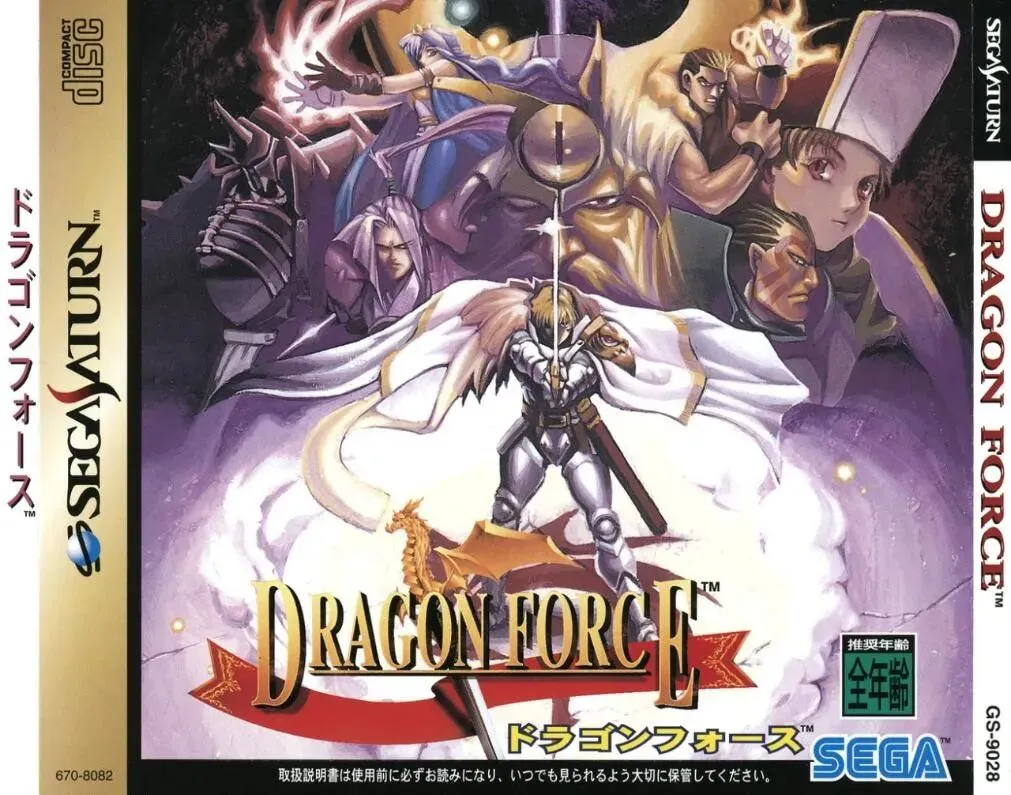
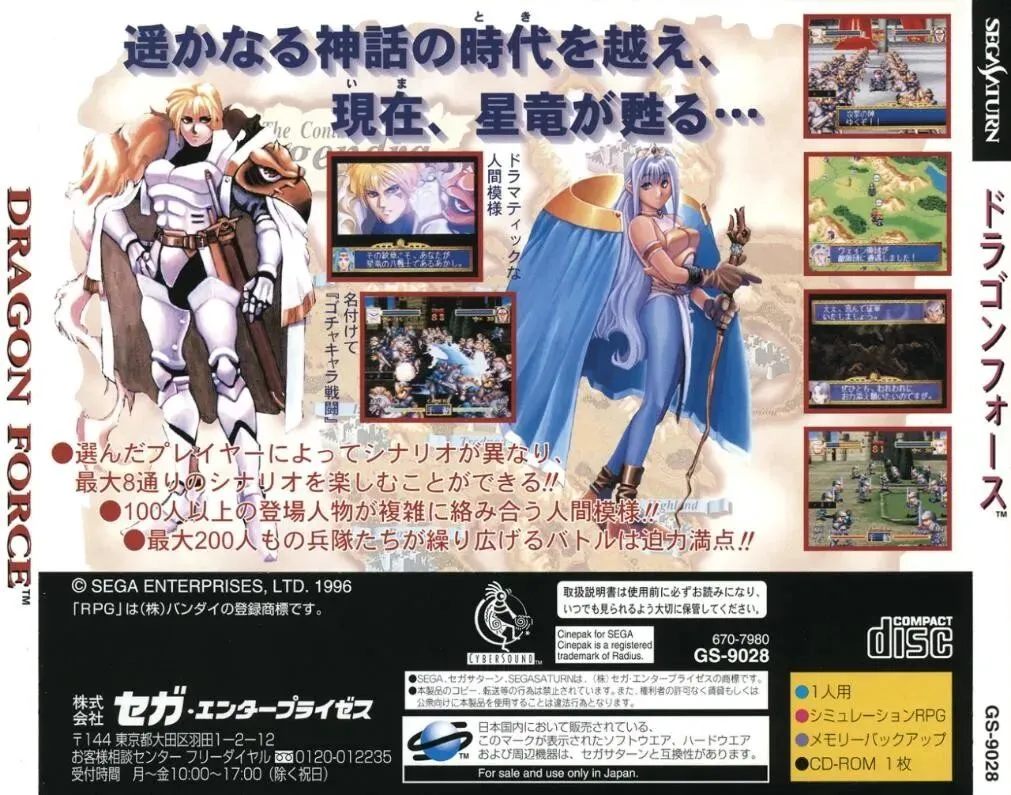
This game, co-developed by Sega and J-Force and localized overseas by Working Designs, was not only a game-changer for the Saturn platform but also redefined the boundaries of the strategy game genre.
It may not be considered a traditional strategy game, but it offered a unique gameplay experience for the 32-bit consoles of its time.
Players choose their favorite monarch on a medieval continent and ultimately unify the continent by collecting generals, building armies, and capturing castles.
The game’s greatest feature is its ability to utilize limited hardware to achieve large-scale, 100-on-100 real-time battles, and its various generals’ special moves are stunningly effective.
I believe many players have played subsequent imitation works. Look at this familiar blue translucent interface; it is the same as before. You can type that name in the barrage. No matter how this gameplay develops, the original Saturn version of “Dragon Force” is probably the purest flavor.
The core innovation of Dragon Force lies in the seamless combination of macro-strategy deduction and micro-character development, creating a dual experience dimension that is both deep and exciting.
The game adopts a three-layer structure of “world map – castle management – battlefield calculation”:
On the world map, players choose one of eight faction leaders (such as the human knight Leo or the demon prince Dylan), and gradually unify the fantasy continent of Endias by conquering castles and expanding territory.
Each leader possesses a unique storyline and faction traits. For example, the elven leader Elena excels at commanding magical troops, while the orc leader Garr focuses on melee assaults.
On the castle management level, players can manage internal affairs such as recruiting troops, forging equipment, and appointing generals.
The innovative “General Loyalty” system requires players to balance resource allocation—overexploiting territories can lead to general rebellion, while judiciously awarding medals (such as the “Certificate of Bravery,” which increases the maximum number of troops commanded) can unlock hidden skills.
On the battlefield calculation level, the game pioneers the visual spectacle of 200 unique character sprites fighting simultaneously in a single battle (a technological breakthrough achieved under the limits of the Saturn hardware).
Players must assign orders based on terrain (plains, mountains, water) and unit countermeasures (cavalry vs. infantry, archers vs. flying units). For example, deploying Nordic Barbarians in snowy terrain grants a 20% attack and defense bonus.
Combat also allows for the activation of special abilities from generals, such as Leo’s “Holy Dragon Smash,” which instantly clears the enemy’s front line.
General Development System: Over 80 recruitable generals, each with their own unique levels, attributes, and class branches (e.g., a Knight can advance to a Paladin or a Dragon Knight).
Through the “Civilization Resonance” mechanic, certain general combinations (such as Guan Yu and Cleopatra) can activate cross-faction combined attacks. This design predates the “Two-Player Battle” system in Fire Emblem: Awakening by 17 years.
Differentiated Unit Development: The game includes 12 basic unit types and over 30 advanced units. For example, the Chinese civilization’s “Zhuge Crossbowman” excels at long-range volley fire, while the Atlantean “Deep Sea Guardian” can march stealthily in water maps.
Upgrading units requires the corresponding civilization’s technology points, creating a positive cycle of “territorial expansion – technology unlocking – unit enhancement.”
Although the Sega Saturn was criticized by developers as a “difficult console to develop for” due to its complex hardware architecture (dual CPUs + dual graphics cards), Dragon Force achieved top-notch visual performance at the time through optimization:
Large-Scale Battle Rendering: Leveraging Saturn’s sprite scaling technology, the game achieves a 100-versus-100 battle effect, with soldier slashes and magical particle effects all running at a stable 30 FPS.
This scale significantly outperforms the contemporary Final Fantasy Tactics (which maxed out at 12 players per match).
Map Details: The isometric world map includes 16 terrain textures, and castle architecture varies by faction (from a Gothic castle for the Terrans to a lava fortress for the Demons).
The Working Designs localization also adds a dynamic weather system, with heavy rain reducing archers’ accuracy and sandstorms obscuring vision.
As a core masterpiece in the mid-to-late Saturn era, the game has sold over 420,000 copies worldwide:
This achievement is particularly impressive given that Saturn has a global installed base of only 9.26 million units and has even driven a short-term recovery in console hardware sales in the North American market.
In the console war between Saturn and PlayStation, Dragon Force and Super Robot Wars F formed the “Saturn Three,” staving off the console’s decline in market share thanks to their exclusive content.
Working Designs’ localized version successfully broke through the cultural barriers of Japanese RPGs in North America through humorous dialogue (such as the sarcastic dialogue between generals), laying the foundation for the subsequent popularity of Final Fantasy VII in the West.
Pioneering Gameplay: Its “large-scale combat + character development” model directly influenced the battlefield design of the Total War series (first released in 2000), while its multi-leader, branching storyline was inherited by Fire Emblem: Three Houses.
Technical Legacy: The Saturn version’s implementation of 200 sprites on the same screen provided a reference for subsequent 2D game hardware optimization.
Series Legacy: Although the sequel, Dragon Force 2, didn’t receive widespread attention due to its release near the end of the Saturn’s lifecycle, the game’s core mechanics were included in Sega’s “SEGA Ages” classic remake program, and the 2020 HD remake still maintains a player approval rating of over 90%.
Regional Version Differences: The original Japanese version includes more adult-oriented dialogue (such as the description of the demonic faction’s dark rituals), while the North American version was localized by Working Designs and added a difficulty selection system and plot hints.
Collector’s Market: Due to its limited release, original Saturn cartridges command high prices in the used market—a pristine Japanese first-press edition sells for around 20,000 yen (approximately 1,000 yuan), while the North American limited edition fetches over $500.
From technological breakthroughs to innovative gameplay, Dragon Force is not only a farewell to the Sega Saturn but also a pivotal moment in the evolution of the strategy RPG genre.
Its design philosophy, seamlessly blending grand war narratives with micro-strategic decision-making, continues to inspire independent game developers even 30 years later.
As the pinnacle of war simulation games for the Sega Saturn (SS) platform, Advanced World War: Sennen Teikoku no Koubou (Japanese original title: ドラゴンフォース) was jointly developed by SystemSoft and Sega and released exclusively for the Saturn on March 20, 1997.
This strategy game, set against the backdrop of World War II, has become a unique “hardcore wargame benchmark” within the Sega console ecosystem thanks to its open historical interpretation, deep strategic system, and technological innovations. It also reflects the strategic layout characteristics of the Saturn platform in its mid-to-late 20th century.
For those who enjoy military-themed strategy games, SystemSoft’s Advanced World War series is synonymous with professional hardcore gaming, and its previous titles for the MD console left a deep impression.
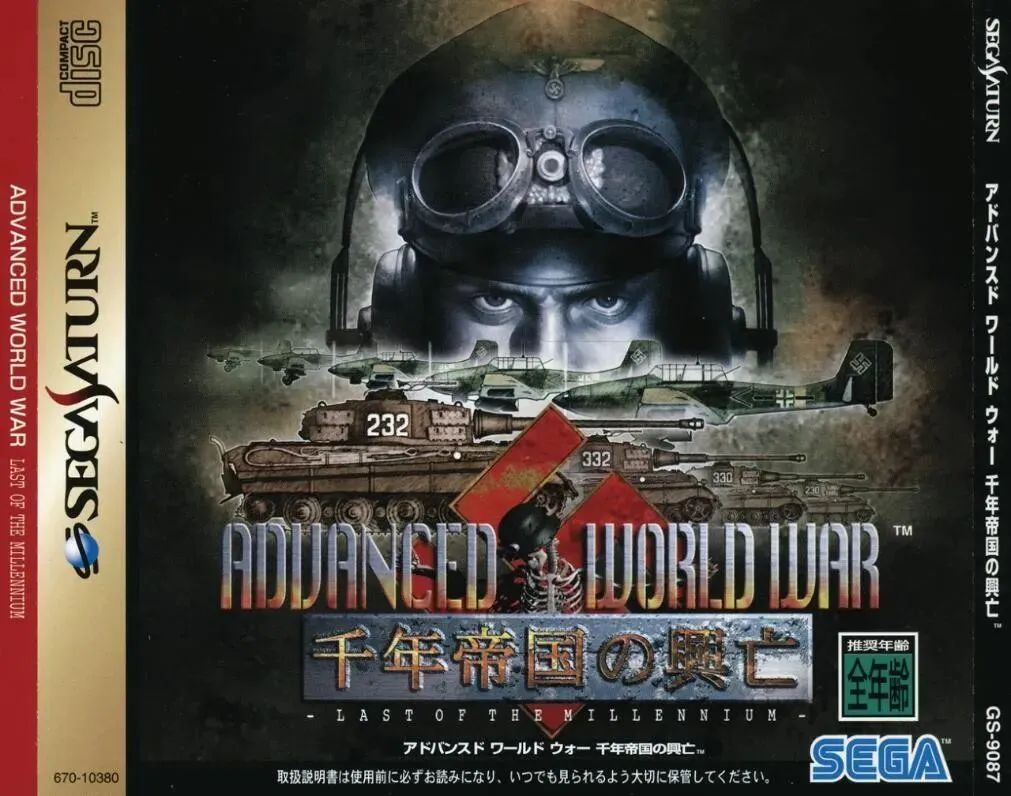
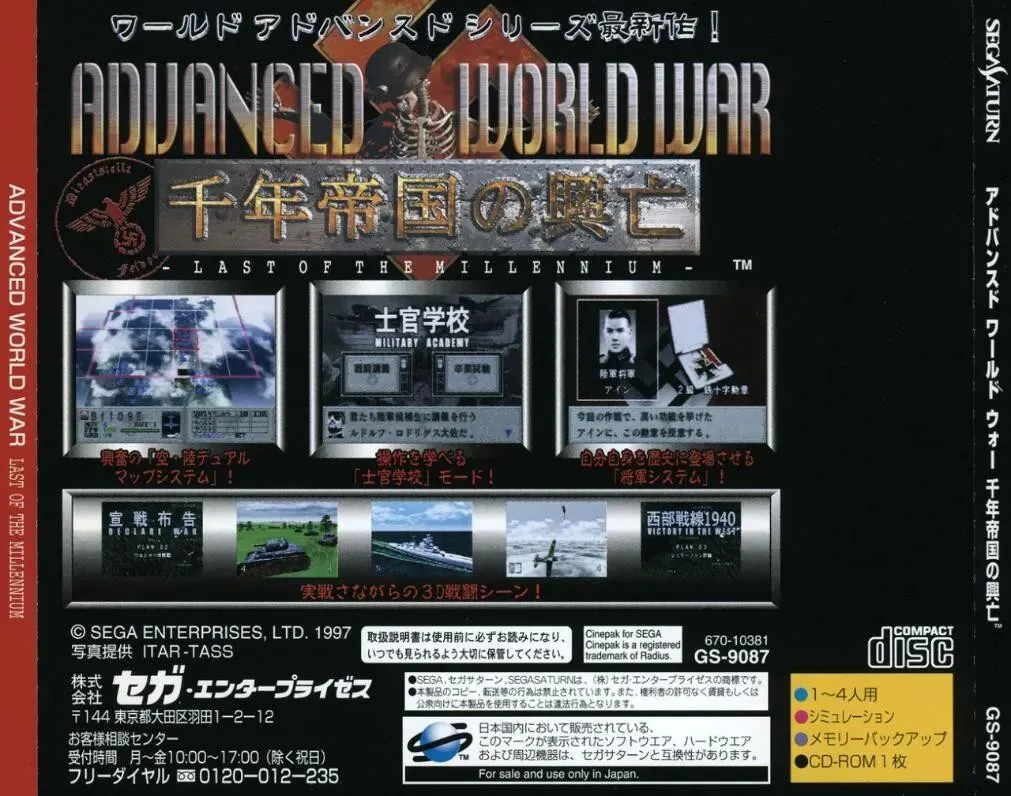
The Saturn version of Advanced World War: Sennen Teikoku no Koubou is still set in World War II. Players play the role of the Wehrmacht starting in 1939. Not only will real historical battles be restored, but they can also enter fictional battles through their own efforts and meet specific conditions, ultimately changing history.
This game features multiple branching paths and endings, requiring multiple playthroughs to fully experience.
The classic grid-based battlefield map has evolved into a 3D format, with separate air and ground zones, facilitating strategic planning. While there are numerous factors to consider, a good place to begin for newcomers is through Officer School, where they master the basics.
Compared to traditional Japanese tactical chess, this game has a higher barrier to entry, and its historical content sparked some controversy back then. However, dedicated fans still frequently revisit it.
Unlike the linear narrative of traditional WWII games, this game takes “historical reconstruction” as its core proposition and constructs an open and diverse war interpretation system:
Multiple Factional Options: Players can choose from the Axis Powers (Germany, Italy, and Japan), the Allies (US, UK, and Soviet Union), or smaller nations like Poland and Finland. Each faction possesses unique strategic resources and geopolitical challenges.
For example, playing as Finland requires leveraging terrain advantages to resist the Soviet Red Army during the Finnish-Soviet War. Playing as Germany offers an alternative historical scenario involving the “Sea Lion” landing in Britain.
Controversial Perspective Setting: The game breaks with the “anti-fascist” narrative by allowing players to advance the conquest storyline from the perspective of the Axis powers, from the blitzkrieg in Western Europe to the transatlantic capture of Washington.
This setting sparked historical controversy in the late 1990s, but it also reinforced the core concept of “historical possibility.”
Dynamic Historical Branching: 7 different endings are linked together through 52 battles, forming a complex storyline.
For example, victory in North Africa triggers the “Collapse of the Kremlin” chapter, while defeat in the Battle of Moscow leads to the “Sunset of the Empire” ending. Even a quick victory in the Battle of Warsaw can unlock the nuclear weapons research track early, allowing for a minor nation’s comeback and other history-shattering plot twists.
The game adopts a two-tiered “macro-strategy – micro-tactics” architecture, combining the rigor of a military simulation with the interactivity of a video game:
A deep game of resources and terrain: This game replicates the resource constraints of real warfare—oil determines armored units’ mobility, steel influences weapon production capacity, and terrain (mountains, deserts, cold winters) directly alters combat parameters (e.g., mountains reduce marching speed but increase defense bonuses). This design makes every battle a multi-variable wargame.
A unique General Points system: Players accumulate “General Points” through campaign achievements, which can be redeemed for unique skills for historical generals like Guderian and Rommel (e.g., “Blitzkrieg Tactics” improves armored assault efficiency), deeply integrating manpower management with tactical choices.
3D battlefield layering technology: As the first 3D game in the series, the game divides the battlefield into two layers: ground and air.
Players must simultaneously command tank convoys and air force formations.
For example, in the Battle of Stalingrad, it was necessary to coordinate aerial bombardments with advancing urban combat troops. This layered design significantly enhances the tactical dimension.
The game provides two core modes to meet different needs:
Campaign Mode: Based on historical events (such as the Battle of Britain and the Normandy Landings), players must achieve strategic objectives (such as capturing key cities and destroying enemy main forces). Each level features a dynamic difficulty adjustment mechanism.
Free Mode: After unlocking all factions, players can freely configure battlefield parameters, such as customizing initial resource loads and climate conditions. This makes it a prime scenario for experienced players to take on “extreme challenges” (such as unifying Europe as Luxembourg).
As a mid-to-late-stage Sega Saturn title, this game exhibits both breakthroughs and limitations in its use of technology:
The Innovation and Cost of 3D: Compared to the 2D maps of previous games in the series, this game utilizes 3D terrain modeling for the first time, accurately recreating battlefield landscapes such as the Western European plains and the North African deserts.
However, due to the limitations of the Saturn hardware, issues such as reduced map size and slow disk loading speeds (a single load could take up to 15-20 seconds) have become a source of controversy among players.
Balancing AI and Computing Efficiency: The game’s AI decision-making system features deep strategic logic (for example, the computer prioritizes cutting off player supply lines), but “thinking lag” is common in later large-scale battles. The Battle of Moscow can last over six hours, earning it the nickname “a time-killing tool” from players.
Localization and Version Differences: The original Japanese version includes rich historical narrative and biographies of generals, while overseas versions (if any) may undergo content adjustments due to controversial historical perspectives.
In the middle and late stages of the Saturn platform’s life cycle (1997), this game achieved relatively impressive commercial success:
Regional Sales: Sales in Japan exceeded 200,000 copies, ranking among the top Saturn games of the same period and becoming a profitability benchmark for the Systemsoft and Sega collaboration.
Hardware Pull Effect: While it hasn’t reached the impact of blockbuster titles like Dragon Force, its popularity in North America through emulators has fostered a niche community of hardcore gamers, indirectly boosting the Saturn platform’s reputation in the strategy game field.
The game’s hardcore positioning has caused significant differences in reviews:
Core Players Recognize: Professional strategy game media emphasize its “tactical depth and historical fidelity,” believing that the 3D layered battlefield and general system create a new paradigm for war simulation. 70% of player reviews on platforms like Mobygames give it a score of 8 or higher.
Common Players Dislike: The lack of difficulty levels, complex resource calculations, and lengthy combat sequences create a high barrier to entry for beginners. Some players criticize it for “sacrificing entertainment for realistic simulation.” Technical flaws, such as slow disk loading, further widen the gap in reviews.
As a mid-to-late-stage exclusive strategy masterpiece for Sega Saturn, this game plays the role of “differentiated competition”:
Filling a void in the hardcore strategy genre: Amidst the Saturn platform’s exclusive lineup, primarily featuring “Sakura Wars” (a romantic adventure) and “Dragon Force” (a fantasy strategy), this title, with its realistic war simulation, appealed to military enthusiasts, creating a distinct niche compared to RPGs like “Final Fantasy” on the Sony PlayStation.
A testing ground for technological exploration: 3D battlefield layering technology provided 3D experience for subsequent Sega strategy games (such as the Saturn version of “Langrisser”). Despite hardware compatibility limitations, it contributed to the accumulation of technological expertise in the transition from 2D strategy games to 3D.
A turning point in the series’ positioning: This game became a key entry in the Grand Strategy series’ transition from 2D to 3D.
Subsequent games (such as the PS2 version of Grand Strategy: European Campaign) continued its core “historical branching” and “general system,” but simplified some of the hardcore settings to adapt to the mainstream market.
A model for the digital transformation of wargames: This game transformed the complex rules of traditional tabletop wargames (such as terrain deduction and resource calculations) into a visual, interactive digital system, providing design references for subsequent hardcore strategy games like Iron Troopers and Wargames, particularly in its narrative structure of “historical possibility.”
The development and release of this game reflect Sega’s platform dilemma in 1997:
A strategy of maintaining its survival through exclusive content: By 1997, the Saturn was already at a disadvantage in competition with the PlayStation.
Sega collaborated with third-party developers like Systemsoft to continuously produce exclusive, hardcore titles to maintain its core user base.
The game’s sales of 200,000 copies demonstrate the market value of niche titles.
A compromise due to technical shortcomings: The disc loading issues and map limitations brought about by 3D were essentially the result of Saturn’s hardware architecture (the complex coordination of dual CPUs) and the pressure of the development cycle.
This became a common pain point for later Saturn games, indirectly accelerating Sega’s strategic decision to switch to the Dreamcast.
Advanced World War: Sennen Teikoku no Koubou, with its “anti-mainstream historical narrative,” “deep wargame system,” and “spirit of technological exploration,” stands out as a unique title on the Sega Saturn platform.
It is both a classic military simulation game, documenting early innovative attempts at historical themes in video games, and a strategic product of Sega’s efforts to maintain the platform’s vitality through differentiated content during a period of intense console competition.
Despite technical limitations and divided reviews, its pioneering “historical possibility” deduction framework and 3D tactical layering design continue to leave a deep mark on the hardcore strategy gaming landscape, earning it the title of “an epic digital wargame reimagining World War II in pixels.”
As the pinnacle of strategy role-playing games (SRPGs) for the Sega Saturn (SS), Shining Force III Trilogy (Japanese: シャイニング・フォース III トリロジー) was developed by Camelot Studios and published by Sega, releasing exclusively on the Saturn in three chapters between 1997 and 1998.
This series is both the culmination of the Shining Force series and a pinnacle of Sega’s strategy game development prowess in the 32-bit console era. Its innovative narrative structure and technological breakthroughs have profoundly shaped the rise and fall of the Sega console ecosystem.

The Sega Saturn console achieved the feat of bringing strategy and chess gameplay to a massive scale. The predecessor, Shining Force 2, cleverly blended traditional RPG storytelling and turn-based combat, received rave reviews on the MD platform, and the sequel offers an even more expansive story.
Shining Force 3 is a trilogy, unfolding from the perspectives of three different classes of characters: an imperial swordsman, a royal prince, and a wandering mercenary. Each installment can be played independently while also carrying over progress from the previous installment.
Despite the limitations of Saturn’s limited 3D capabilities, the developers managed to achieve the desired polygonal landscape.
The game’s freely rotatable camera, utilizing the controller, greatly facilitates strategic exploration, and weapon proficiency and character friendliness provide players with a rich and engaging progression experience.
This excellent overall performance makes it one of the few original tactical games released for the Super Saiyan console. To this day, the game has yet to receive a port or remaster, a source of regret for many fans.
The trilogy reconstructs a fantasy war epic with a “same time and space, different perspectives” narrative technique, a design that was revolutionary in the SRPG field in the late 1990s:
The three-part storyline unfolds progressively: The three chapters, featuring Republic General Symbios (Scenario 1: The Giant God of the Royal Capital), Imperial Prince Medio (Scenario 2: The Sniped Son of God), and mercenary Julian (Scenario 3: The Ice Walled Evil Palace), gradually reveal the full extent of the “Son of God Prophecy” and the cult’s conspiracy through the perspectives of opposing factions.
For example, the Imperial army, which debuted as the “villain” in Scenario 1, becomes a player-controllable force of justice in Scenario 2. This reversal of perspectives breaks the traditional binary opposition between good and evil in SRPGs.
Save inheritance allows for an immersive closed loop: Character development data and plot choices from previous games can be inherited through saves to influence subsequent chapters.
For example, NPCs rescued in Scenario 1 will join the team in Scenario 3, and unlocked weapon proficiency will limit the learning of subsequent special moves.
This design fosters cross-chapter growth ties, but due to the complexity of the Saturn console’s save mechanism, it also presents a technical challenge for players in the emulator era (save formats must be converted using specialized tools to achieve perfect inheritance).
A Deeply Expanded Worldview: Continuing the fantasy setting of “The Ark of Light,” the game features a political landscape comprised of the Republic, the Empire, and the Cult, each with its own unique belief system and military technology.
For example, the Empire’s “Giant Weapons” represent the alienation of industrial civilization, while the Republic’s “Natural Magic” symbolizes the preservation of traditional power.
This setting imbues the war narrative with powerful philosophical overtones.
The game retains the classic chess series framework while incorporating deep strategic mechanisms and innovative elements:
A tactical revolution on the 3D battlefield: For the first time, the fully 3D battlefield modeling is implemented, introducing dynamic battlefield elements such as terrain elevation (e.g., high ground increases ranged attack range), terrain damage (swamps slow players, volcanic eruptions), and support for rotating camera viewing.
This design elevates the battlefield from a flat chessboard to a three-dimensional space, requiring players to formulate strategies based on the terrain (e.g., using canyons to ambush enemy cavalry).
Dual dimensions of character growth: The innovative “Friendship System” and “Weapon Mastery System” enhance friendship and trigger combined skills (such as Symbios and Medio’s “Light and Dark Strike”).
Continued use of the same weapon builds mastery and unlocks unique special moves (such as “Meteor Slash” awakened by reaching maximum mastery with a sword weapon).
This dual system design strengthens teamwork and strategic coordination while allowing for personalized character development.
The pinnacle of large-scale strategic warfare: “Scenario 3” pioneers the “Split and Converge” tactic, requiring players to simultaneously command three armies to defeat the mid-boss separately, ultimately converging to face the ultimate enemy at the Evil God’s Palace.
This multi-front combat design requires players to balance resource allocation and battlefield maneuvering, pushing the series’ strategic depth to its peak.
As a testbed for 3D technology on the Saturn platform, the game’s technology exhibits both breakthroughs and limitations:
A 3D visual breakthrough: Compared to the 2D pixel graphics of the MD era, this game realizes full 3D modeling of characters and scenes.
The special effects of summoning magic (such as “Dragon’s Descent”) are top-notch on the Saturn platform. Some players think its visual effects are comparable to the summoning animations in “Final Fantasy 7”.
Compromise due to hardware limitations: Due to the collaborative limitations of Saturn’s dual-CPU architecture, large-scale battle scenes experience frame rate fluctuations (especially the multi-unit melee in “Scenario 3”), and the number of character polygons is lower than that of “Final Fantasy 7” on the PS platform (the former is a 1-on-1 battle model, while the latter implements a complex 3-on-N scene).
In addition, the slow CD-ROM reading speed resulted in long battle loading times, which became one of the main complaints of players.
The sales of the trilogy showed a downward trend:
Regional Performance: Script 1 sold approximately 150,000 copies in Japan thanks to its initial success. Script 2’s sales dropped to 100,000, and Script 3’s sales were limited to approximately 80,000 due to the decline of the Saturn platform.
Although overall sales fell short of expectations, it still ranked above average among Saturn games of the same period, making it the last profitable project from Camelot’s collaboration with Sega.
Market Background: 1997-1998 marked the period when the PlayStation platform dominated the market, thanks to blockbuster titles like Final Fantasy VII. Saturn’s installed base continued to decline, making it difficult for the trilogy to reach mainstream players.
Furthermore, the trilogy’s episodic release model (requiring separate purchases) increased the player experience cost, further limiting sales growth.
The game has received high praise from professional media and core player groups:
Media Acclaim: Famitsu named it the “Best SRPG for the Saturn,” citing its “3D battlefield design redefining the spatial logic of tactical games.”
GameSpot, an international media outlet, emphasized that its “multi-perspective narrative and friendship system set a new benchmark for role-playing games.”
Player Reputation: In the retro gaming community, the trilogy is considered “the pinnacle of tactical games,” and its depth of story, tactical complexity, and hidden content (such as the unlocking conditions for the hidden character “Knight of Light”) remain highly praised.
Despite technical flaws, core players generally believe that its gameplay depth more than compensates for the hardware limitations.
As a mid-to-late Saturn exclusive SRPG masterpiece, the trilogy played a key role in “differentiated competition”:
Category filling and user retention: In the exclusive lineup of the Saturn platform, mainly “Sakura Wars” (romance adventure) and “Dragon Force” (fantasy strategy), the trilogy attracted core strategy players with its hardcore SRPG positioning, forming a category dislocation with the RPG masterpieces on the PS platform, delaying the loss of core users to the PS platform.
The experimental value of technological exploration: The accumulated technologies, such as 3D battlefield modeling and multi-unit collaborative AI provided development experience for Sega’s subsequent strategy games (such as the Saturn version of “Langrisser”), becoming an important reference case for the 3D transformation of the Saturn platform.
The trilogy is not only the pinnacle of the Shining Force series, but also has a profound impact on the war chess game category:
The swan song of the series and the turning point of the IP: As the last work of Camelot’s cooperation with Sega, after the trilogy, the Takahashi brothers switched to Nintendo to develop the “Golden Sun” series.
The “Bright Force” IP lost its core creative team, and subsequent works (such as “Bright Soul”) turned to the ARPG type, completely deviating from the tradition of the series.
Industry references in narrative and gameplay: The multi-perspective narrative technique has been borrowed by modern SRPGs such as “Fire Emblem: Three Houses”; the integrated design of the “friendship system” and “terrain tactics” has provided system innovation ideas for works such as “Final Fantasy Tactics”.
The development and release of the trilogy reflects Sega’s platform dilemma and strategic choices in the late 1990s:
An attempt to maintain the vitality of exclusive content: Against the backdrop of Saturn’s hardware failure, Sega supported core developers like Camelot, continuing to produce exclusive blockbusters to sustain the platform’s vitality.
While the trilogy didn’t reach the sales heights of Dragon Force, it demonstrated the market value of niche hardcore titles.
Development resource allocation dilemma: Compared to the $40 million development budget for Final Fantasy VII on the PlayStation, the trilogy’s development budget was relatively limited, resulting in technical performance that failed to fully realize the potential of the Saturn hardware (for example, the large-scale 3D battle scenes on the level of Final Fantasy VII were not achieved).
This resource disparity accelerated the decline of Sega’s console business and laid the groundwork for the subsequent release of the Dreamcast.
With its epic multi-perspective narrative structure and innovative 3D battlefield tactics, the Shining Force 3 trilogy became a “monumental SRPG” for the Sega Saturn platform.
It is both the pinnacle of Camelot Studios, a testament to the creative talent of the Takahashi brothers, and the final glory of strategy games in the Sega console era, reflecting the struggles and innovations of the Saturn platform amidst intense hardware competition.
Although commercial success failed to save the Saturn from decline, the trilogy remains an unparalleled classic in the hearts of nostalgic gamers thanks to its profound storytelling and in-depth strategic systems.
Its innovative design and technological exploration have left a valuable legacy for the development of subsequent strategy games.
The Sega Saturn console was home to many excellent strategy games, and I’m sure every player who experienced it has their own favorite.
So, what other must-play strategy masterpieces have you played? Share your memories in the comments section.